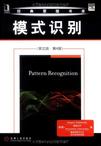模式识别
出版时间:2009-8 出版社:机械工业 作者:西奥多里德斯 页数:961
Tag标签:无
前言
This book is the outgrowth of our teaching advanced undergraduate and graduatecourses over the past 20 years.These courses have been taught to differentaudiences, including students in electrical and electronics engineering, computerengineering, computer science, and informatics, as well as to an interdisciplinaryaudience of a graduate course on automation. This experience led us to makethe book as self-contained as possible and to address students with different back-grounds. As prerequisitive knowledge, the reader requires only basic calculus,elementary linear algebra, and some probability theory basics. A number of mathe-matical tools, such as probability and statistics as well as constrained optimization,needed by various chapters, are treated in fourAppendices. The book is designed toserve as a text for advanced undergraduate and graduate students, and it can be usedfor either a one- or a two-semester course. Furthermore,it is intended to be used as aself-study and reference book for research and for the practicing scientist/engineer.This latter audience was also our second incentive for writing this book, due to theinvolvement of our group in a number of projects related to pattern recognition.
内容概要
本书是享誉世界的名著,内容既全面又相对独立,既有基础知识的介绍,又有本领域研究现状的介绍,还有对未来发展的展望,是本领域最全面的参考书,被世界众多高校选用为教材。本书可作为高等院校计算机。电子、通信。自动化等专业研究生和高年级本科生的教材,也可作为计算机信息处理、自动控制等相关领域的工程技术人员的参考用书。 本书主要特点 提供了大型数据集和高维数据的聚类算法以及网络挖掘和生物信息学应用的最新资料。 涵盖了基于图像分析、光学字符识别,信道均衡,语音识别和音频分类的多种应用。 呈现了解决分类和稳健回归问题的内核方法取得的最新成果。 介绍了带有Boosting方法的分类器组合技术。 提供更多处理过的实例和图例,加深读者对各种方法的了解。 增加了关于热点话题的新的章节,包括非线性维数约减、非负矩阵分解、实用性反馈。稳健回归、半监督学习,谱聚类和聚类组合技术。
作者简介
西奥多里德斯,希腊雅典大学信息系教授。主要研究方向是自适应信号处理、通信与模式识别。他是欧洲并行结构及语言协会(PARLE-95)的主席和欧洲信号处理协会(EUSIPCO-98)的常务主席、《信号处理》杂志编委。
书籍目录
Preface CHAPTER 1 Introduction 1.1 Is Pattern Recognition Important? 1.2 Features, Feature Vectors, and Classifiers 1.3 Supervised, Unsupervised, and Semi-Supervised Learning 1.4 MATLAB Programs 1.5 Outline of The Book CHAPTER 2 Classifiers Based on Bayes Decision Theory 2.1 Introduction 2.2 Bayes Decision Theory 2.3 Discriminant Functions and Decision Surfaces 2.4 Bayesian Classification for Normal Distributions 2.5 Estimation of Unknown Probability Density Functions 2.6 The Nearest Neighbor Rule 2.7 Bayesian Networks 2.8 Problems References CHAPTER 3 Linear Classifiers 3.1 Introduction 3.2 Linear Discriminant Functions and Decision 3.3 The Perceptron Algorithm 3.4 Least Squares Methods 3.5 Mean Square Estimation Revisited 3.6 Logistic Discrimination 3.7 Support Vector Machines 3.8 ProblesmCHAPTER 4 Nonlinear ClassifiersCHAPTER 5 Feature SelectionCHAPTER 6 Feature Generation I: Data Transformation and Dimensionality ReductionCHAPTER 7 Feature Generation IICHAPTER 8 Template MatchingCHAPTER 9 Context-Dependent ClassificationCHAPTER 10 Supervised Learning: The EpilogueCHAPTER 11 Clustering: Basic ConceptsCHAPTER 12 Clustering Algorithms I: Sequential AlgorithmsCHAPTER 13 Clustering Algorithms II: Hierarchical AlgorithmsCHAPTER 14 Clustering Algorithms III: Schemes Based on Function OptimizationCHAPTER 15 Clustering Algorithms IVCHAPTER 16 Cluster ValidityAPPENDIX A Hints from Probability and StatisticsAPPENDIX B Linear Algebra BasicsAPPENDIX C Cost Function OptimizationAPPENDIX D Basic Definitions from Linear Systems TheoryIndex
章节摘录
插图:Chapter 14 deals with clustering algorithms based on cost function optimization,using tools from differential calculus. Hard clustering and fuzzy and possibilisticschemes axe considered, based on various types of cluster representatives, includingpoint representatives, hyperplane representatives, and shell-shaped representatives.In a first course, most of these algorithms are bypassed, and emphasis is given tothe isodata algorithm.Chapter 15 features a high degree of modularity. It deals with clustering algo-rithms based on different ideas,which cannot be grouped under a single philosophy.Spectral clustering, competitive learning, branch and bound, simulated annealing,and genetic algorithms are some of the schemes treated in this chapter. These arebypassed in a first course.Chapter 16 deals with the clustering validity stage of a clustering procedure. Itcontains rather advanced concepts and is omitted in a first course. Emphasis is givento the definitions of internal, external, and relative criteria and the random hypothe-ses used in each case. Indices, adopted in the framework of external and internalcriteria, are presented, and examples are provided showing the use of these indices.Syntactic pattern recognftfon methods are not treated in this book. Syntacticpattern recognition methods differ in philosophy from the methods discussed inthis book and, in general, are applicable to different types of problems. In syntacticpattern recognition, the structure of the patterns is of paramount importance, andpattern recognition is performed on the basis of a set of pattern primitives, a setof rules in the form of a grammar, and a recognizer called automaton. Thus, wewere faced with a dilemma: either to increase the size of the book substantially, orto provide a short overview (which, however, exists in a number of other books),or to omit it. The last option seemed to be the most sensible choice.
编辑推荐
《模式识别(英文版)(第4版)》由机械工业出版社出版。
图书封面
图书标签Tags
无
评论、评分、阅读与下载
用户评论 (总计14条)
- 我认为,对于一本专业书籍的评论,不应该仅仅局限于所谓对其纸张、翻译的水平上,而应该通过阅读和推倒后才得出。我在半年前购买此书,并认真阅读,期间还读过本书原创作者在其出版社刊登的课件等资料,得出对这本书的主要结论如下:1. 这本书还有一本姊妹篇,专门讲模式识别matlab实验的;2. 这本书的原作者写这本书其实并没有花太大心思,很多地方都直接描述为“请见某某论文”,而具体的推导过程省略了很多,大部分只是提一下理论的大概思路,前后的理论、章节很难看得到有联系;3. 这本书基本上可以说是把所有模式识别领域所涉及到的主要算法以几乎按照摘要的方式讲了一遍,除非是模式识别领域的研究资深人员,对一般的读者几乎没用;4. 本书的数学推导过程非常晦涩,几乎是从论文上原封不动的照抄下来,缺乏作者自己的理解,虽然在很多地方有一些作者的注释,但这些注释对于真正理解他所说的这些理论几乎没有用。5. 本书的很多地方,如果你仔细看并思考,会发现其实作者自身并没有搞懂这一理论,相当多的时候甚至只是以偏概全的应付行为。6. 作者是一位希腊的不出名大学的教师,很难说他这个水平能算得上是国际出名学者;总的来说,这本书根本不能称之为所谓“经典”教材,它甚至在某种程度上都不能算作教材,只能算做一本较厚的文献综述而已。另外,在这里为学习模式识别的朋友推荐斯坦福大学开放课程:机器学习,其中配套的讲稿比这本书讲得要清楚得多,而且还是免费的。
- 给差评就不让我发言!卓越真有你的!我发一万遍也要让大家知道!!!!1这书千万别买!字比字典还小!
- 32开的面小了些,原版应该比这个大
- 已收到货,对货比较满意。书的字小了点,看起来费劲。看了三章,对书非常满意,不但有理论,还有很多示例辅助学习,有的地方有些深奥,还不是很懂。
- 作者对模式识别的基本理论,技术做了比较全面的描述,大体上比较容易理解。
- 书是正版,看着很舒服,值得购买
- 书买了,但才看了一点点,内容方面不敢妄下评论,纸张还不错,送货速度也挺快,就是字有点小。希望出版社下次可以改成大点的
- 不错的书,内容丰富,很经典
- 挺好的一本书,是正版的,纸质也很好,适合自学
- Its the one I desired for long time.
- 还是觉得亚马逊的服务好,晚上八点多送到的,师傅很是敬业,致敬,这本书很好,非常好的模式识别的入门教材,非常喜欢!
- 还没有仔细看,大概翻了一下书的大小和纸张什么的都是我喜欢的
- 英文的, 读起来比中文的舒服些
- 机械工业出版社华章分社印刷纸张极差
